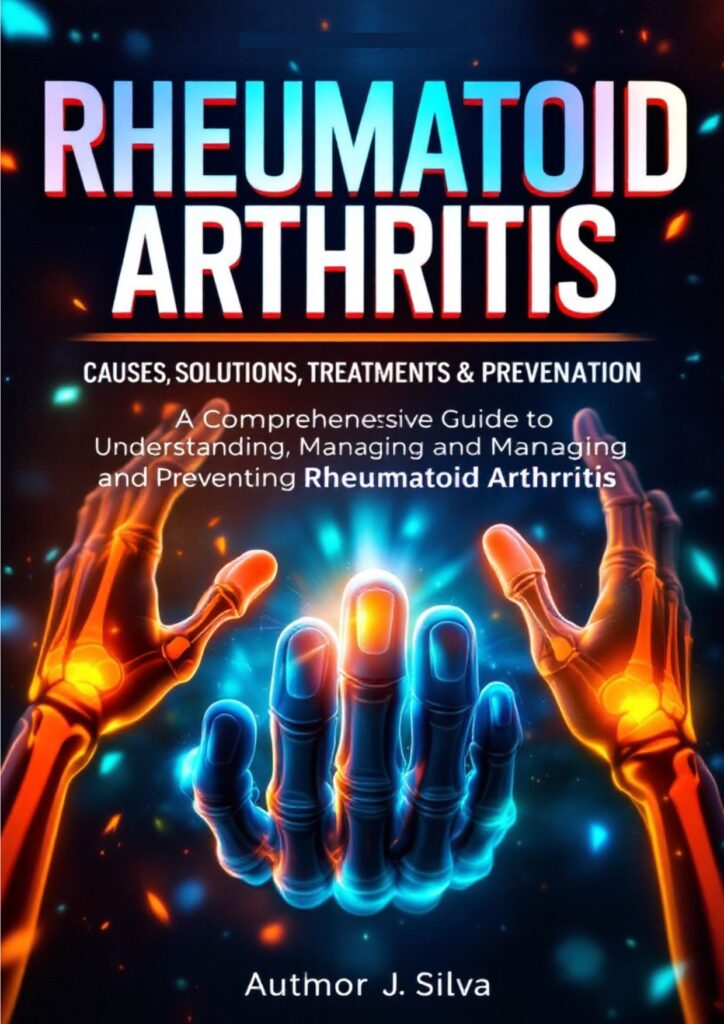
Introduction
Rheumatoid arthritis therapies encompass a wide spectrum of treatment options aimed at reducing inflammation, stopping joint damage, managing pain, and maintaining function. In this review, I’ll walk you through the current landscape: conventional and biologic DMARDs, supportive treatments, challenges, and what to expect in terms of outcomes and safety.

Exploring Modern Rheumatoid Arthritis Therapies
Over the past decade, Rheumatoid Arthritis Therapies have evolved dramatically, offering patients more effective and targeted treatment options than ever before. Modern approaches focus not only on relieving symptoms but also on slowing or even halting joint damage progression. Medications such as DMARDs (Disease-Modifying Anti-Rheumatic Drugs) and biologic agents have revolutionized how RA is managed. These therapies help reduce inflammation, preserve joint structure, and improve long-term quality of life. Alongside medication, lifestyle modifications — including physical therapy, anti-inflammatory diets, and stress management — play a vital role in maximizing treatment success.
Combining Traditional and Innovative Rheumatoid Arthritis Therapies
A growing number of patients are benefiting from a combination of traditional and innovative Rheumatoid Arthritis Therapies. While conventional DMARDs like methotrexate remain the foundation of RA treatment, the introduction of biologic therapies and targeted synthetic drugs has expanded the horizon of possibilities. Combining these medical treatments with holistic approaches — such as yoga, acupuncture, and omega-3 supplementation — can enhance joint flexibility and reduce fatigue. Personalized treatment plans, guided by a rheumatologist, are essential to balance medical precision with natural wellness strategies for the best possible outcome.
Natural Rheumatoid Arthritis Therapies: Supporting the Body’s Healing Process
In addition to conventional medical treatments, many individuals are turning to Natural Rheumatoid Arthritis Therapies to support their bodies from the inside out. These approaches aim to reduce inflammation, ease pain, and improve mobility without relying solely on medication. Anti-inflammatory diets rich in omega-3 fatty acids, turmeric, and leafy greens can significantly reduce joint stiffness and swelling. Gentle exercises such as swimming, yoga, or tai chi help maintain joint flexibility and enhance circulation. Natural supplements — including curcumin, glucosamine, and chondroitin — may also provide added comfort and support for long-term joint health.
Holistic Approaches in Rheumatoid Arthritis Therapies
Holistic Rheumatoid Arthritis Therapies focus on treating the body, mind, and spirit as a whole rather than just managing physical symptoms. Stress reduction techniques, such as meditation, breathing exercises, and guided imagery, can lower cortisol levels and reduce RA flare-ups. Adequate sleep, hydration, and a balanced lifestyle further contribute to maintaining immune balance and joint function. While these therapies do not replace medical treatment, they complement traditional care beautifully — helping patients achieve a more sustainable, empowered approach to living with rheumatoid arthritis.
Understanding the Need for Rheumatoid Arthritis Therapies
Why RA Requires Targeted Therapies
Rheumatoid arthritis (RA) is not simply “arthritis” — it’s an autoimmune, inflammatory disease that attacks the synovium, leading to destruction of cartilage and bone, disability, and systemic complications. Without adequate therapy, the damage may be irreversible. Early, aggressive treatment is now standard of care.
The goal of therapy isn’t just symptom relief — it’s to achieve remission or low disease activity and prevent structural damage.
Key Concepts in RA Therapies
- Treat-to-Target: Adjust treatments until a target (remission or low disease activity) is reached.
- Combination Therapy: Often more effective than single drug use.
- Safety Balance: Therapies must balance efficacy with risk of infection, malignancy, or organ toxicity.
- Personalization: Age, comorbidities, serostatus, severity, and preferences influence choices.
Conventional DMARDs & Their Role
What Are DMARDs?
DMARDs (Disease-Modifying Anti-Rheumatic Drugs) are the backbone of rheumatoid arthritis therapies. They modulate the immune system to slow disease progression rather than just mask symptoms.
They are subdivided into:
- Conventional synthetic DMARDs (csDMARDs): methotrexate, sulfasalazine, hydroxychloroquine, leflunomide
- Biologic DMARDs (bDMARDs): monoclonal antibodies or fusion proteins targeting specific immune pathways
- Targeted synthetic DMARDs (tsDMARDs): small molecules like JAK inhibitors
Key Conventional DMARDs
- Methotrexate (MTX)
- Widely considered first-line therapy
- Studies suggest optimizing dose and route (oral vs subcutaneous) can improve outcomes.
- Often paired with folic acid to reduce side effects
- Sulfasalazine & Hydroxychloroquine
- Often used in milder cases or as add-ons
- Good safety profiles, though their effect is more modest
- Leflunomide
- Alternative for patients who cannot tolerate methotrexate
- Requires liver monitoring
Benefits & Limitations
- Conventional DMARDs can slow joint damage, reduce inflammation, and improve function
- But they take weeks to months to act — bridging therapies may be needed
- Some patients are non-responders or intolerant
Biologics & Targeted Therapies
Why Use Biologics / Targeted Agents?
If conventional DMARDs fail or disease is aggressive, biologics or targeted therapies are used. These therapies act on specific immune components (cytokines, cell receptors).
Common Biologics & Their Targets
- TNF inhibitors (etanercept, infliximab, adalimumab)
- IL-6 inhibitors (tocilizumab, sarilumab)
- B-cell depleting therapy (rituximab)
- T-cell costimulation modulators (abatacept)
- IL-1 inhibitors (anakinra, less common in RA)
These therapies often deliver faster and stronger effects than conventional DMARDs.
Targeted Synthetic DMARDs (JAK inhibitors)
- Small molecules like tofacitinib, baricitinib, upadacitinib
- Work intracellularly to block Janus kinase pathways
- They offer oral administration and broad immunomodulation
Efficacy & Safety
- Meta-analyses confirm their superior efficacy in many patients who fail csDMARDs.
- But safety risks: infections, malignancies, thromboembolic events.
- Shared decision-making is essential.
Supportive & Adjunctive Therapies
Corticosteroids & NSAIDs
- Used for symptom relief and flare control
- Steroids may be used short-term or intra-articularly
- Long-term steroid use has many risks
Physical & Occupational Therapy
- Maintain joint mobility, strengthen muscles, preserve function
- Assistive devices and splinting can help daily tasks
Lifestyle & Self-Care
- Regular exercise: gentle, low-impact activities help reduce stiffness.
- Joint protection strategies, pacing tasks
- Nutrition: anti-inflammatory diet, weight management
- Stress reduction, sleep quality
Pain Management Strategies
- Heat, cold therapy, topical pain relievers
- In some cases, short-term analgesics
- Avoid reliance on opioids where possible
Choosing the Best Treatment for Rheumatoid Arthritis

Factors to Consider
- Disease severity, progression rate
- Serostatus (RF/anti-CCP positivity)
- Patient age, comorbidities, preferences
- Cost, access, administration route
Treatment Algorithms
- Start with methotrexate (or csDMARD) plus bridging therapy
- If inadequate response, escalate to biologics or JAK inhibitors
- Monitor and adjust frequently (treat-to-target)
- In challenging cases, consider difficult-to-treat RA protocols.
The Mayo Clinic provides detailed information about rheumatoid arthritis symptoms, causes, and available treatment options, helping readers better understand therapeutic approaches.
Get Your Ultimate Guide to Rheumatoid Arthritis Now!
Are you struggling with rheumatoid arthritis or worried about the early signs of RA? Don’t wait until the pain gets worse! Our comprehensive eBook, Rheumatoid Arthritis: Causes, Solutions, Treatments & Prevention, is your complete guide to understanding RA, managing symptoms, and preventing joint damage.
Inside this eBook, you’ll discover:
- Detailed explanations of rheumatoid arthritis symptoms and RA symptoms
- Proven strategies for rheumatoid arthritis treatment
- How to recognize early signs of rheumatoid arthritis before serious damage occurs
- Lifestyle tips, exercises, and diet plans for arthritis in fingers and other affected joints
- Expert advice for living a healthy, active life with RA
Don’t let rheumatoid arthritis control your life! Take the first step towards relief and empowerment.
Click here to get your eBook now!
Why you need this eBook:
- Easy-to-understand language, perfect for anyone dealing with RA
- Actionable solutions and preventive measures you can implement today
- Professional, science-backed guidance from experts in autoimmune health
Take control of your health—get your copy today and start managing your RA like a pro!
Diagnosing Rheumatoid Arthritis & Role of Therapy
Diagnosis Recap
Diagnosis involves clinical criteria, serologic markers (rheumatoid factor, anti-CCP), imaging, and exclusion of mimics. No single test is definitive.
Early diagnosis is crucial because the sooner therapy starts, the better the long-term outcomes.
Therapy in Special Populations: Juvenile Rheumatoid Arthritis
While the focus here is adult RA, many therapeutic principles apply in juvenile arthritis (dosing, safety, growth considerations).
Common Challenges and Special Topics
Methotrexate Intolerance & Optimization
Methotrexate is very effective, but some patients experience side effects or intolerance. Strategies include switching to subcutaneous route or adjusting dose.
Muscle Health and DMARDs
Some RA patients develop muscle loss or sarcopenia; certain DMARDs may help preserve muscle mass.
Difficult-to-Treat RA
A portion of patients (5–25%) do not respond adequately to standard therapies; these require specialized management strategies.
Boost Your Joint Health with JointVive
A Unique Solution for Comfort, Flexibility, and Mobility
For those looking for extra support in managing joint discomfort and maintaining mobility, JointVive can be a game-changer. Unlike anything else on the market, JointVive is crafted from a unique blend of rare, hard-to-source ingredients designed to help support joint comfort, flexibility, and overall mobility. Combined with proper lifestyle habits and RA management strategies, JointVive may provide the additional boost your joints need to stay active and pain-free. 🌟 Don’t wait—take control of your joint health today! Click here to get JointVive now and start feeling the difference.
Early detection in fingers allows for prompt treatment and prevents permanent deformities.
FAQ – Rheumatoid Arthritis Therapies
Q1: Are biologics always better than conventional DMARDs?
A1: Not always. Many patients do well with csDMARDs, especially if disease is mild. Biologics and JAK inhibitors are particularly useful when conventional therapies fail or disease is aggressive.
Q2: How long does it take for therapy to show effect?
A2: Conventional DMARDs typically require several weeks to months to show full effect; biologics and JAK inhibitors often act faster.
Q3: Can therapy lead to side effects?
A3: Yes. Increased risk of serious infections, malignancy, liver toxicity, and other adverse events exist, especially with biologics and immunosuppression.
Q4: Can arthritis therapies reverse joint damage?
A4: They can slow or stop damage progression and, in some early cases, allow repair. But irreversible damage cannot always be reversed.
Q5: How often should therapy be changed?
A5: Therapy is monitored at intervals (every few months). If goals are not met (remission or low disease activity), escalation is typical.
Conclusion
Rheumatoid arthritis therapies have evolved tremendously. From conventional DMARDs to biologics and targeted synthetic agents, patients now have many options to control inflammation, protect joints, and preserve function. While no single therapy fits all, with careful selection, monitoring, and self-care, many people live active and fulfilling lives despite RA.
If you’re exploring rheumatism treatment or seeking best treatment for rheumatoid arthritis, working with a skilled rheumatologist and staying informed about therapy advances is essential.
SEE ALSO: Inflammatory Arthritis: A Comprehensive Review
Disclaimer: This article is for informational purposes only and does not replace the advice of a healthcare professional. Consult a doctor or nutritionist before starting any supplementation. Some links in the text are affiliate links, which means we may receive a commission if you make a purchase. This does not impact the price for you and helps us continue to bring you quality content.


2 comentários sobre “Rheumatoid Arthritis Therapies: A Complete Review”